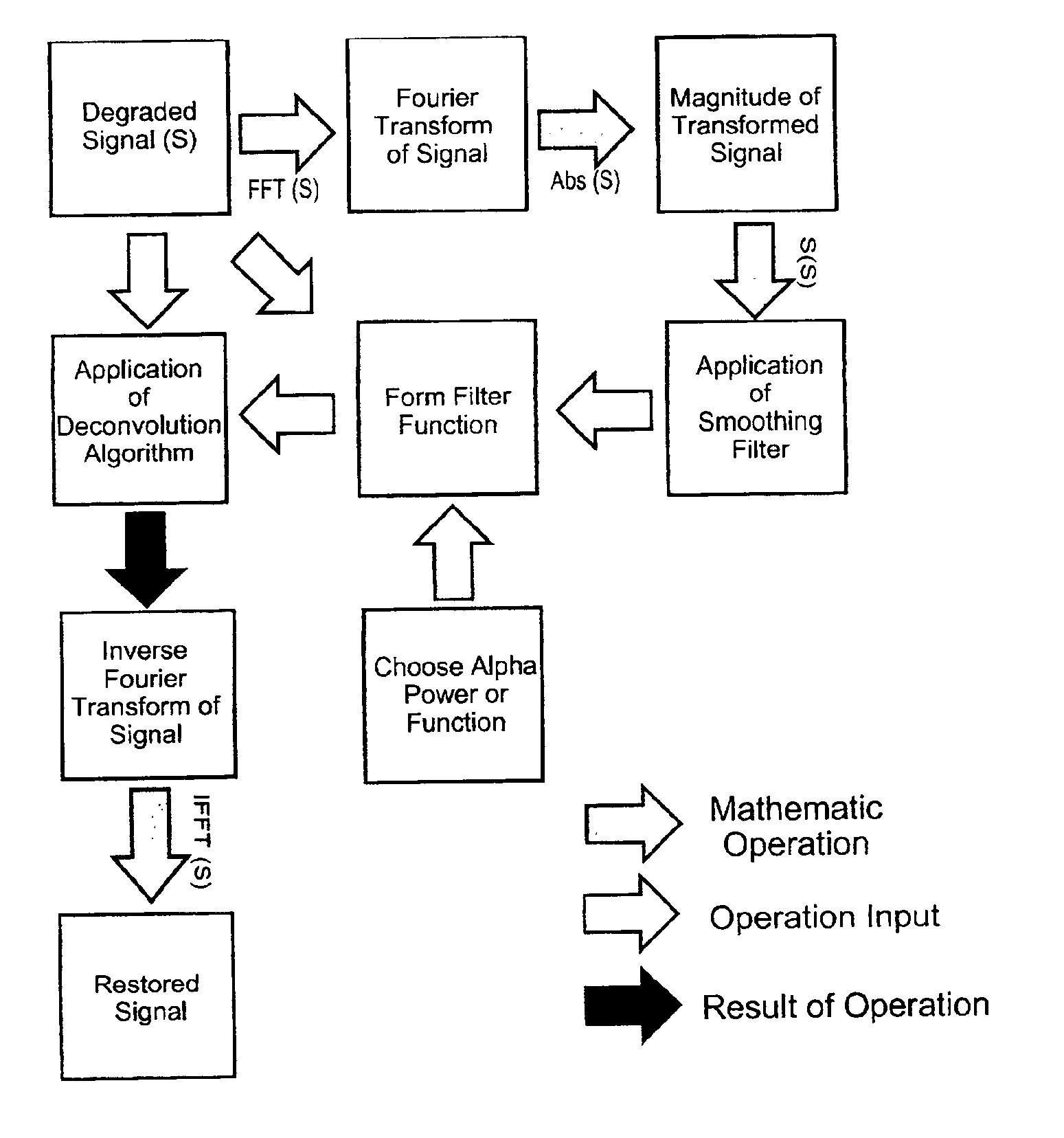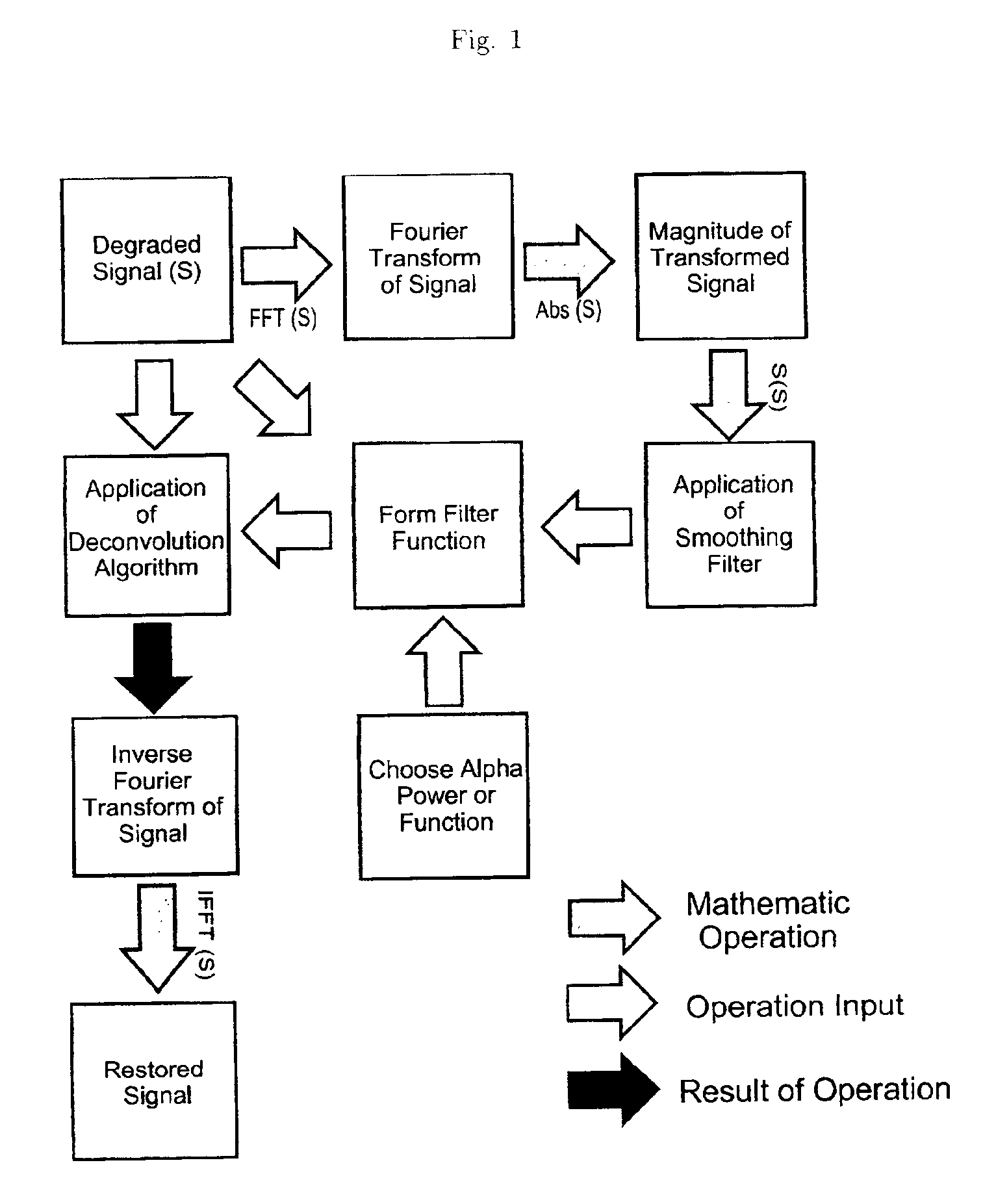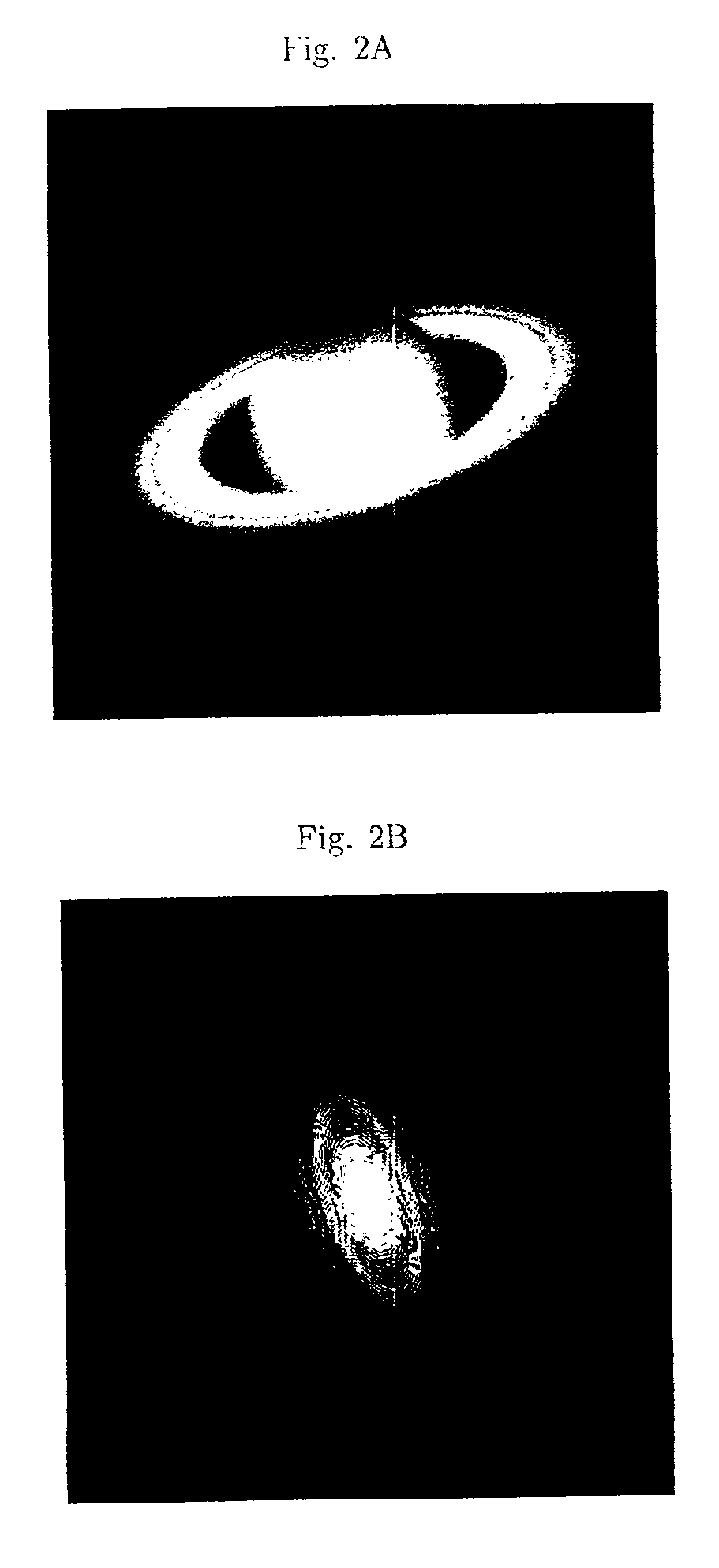Signal processing using the self-deconvolving data reconstruction algorithm
a signal processing and data reconstruction technology, applied in the field of signal processing, can solve the problems of communication lines suffering from attenuation, the signal normally cannot be discerned from the restored signal,
- Summary
- Abstract
- Description
- Claims
- Application Information
AI Technical Summary
Benefits of technology
Problems solved by technology
Method used
Image
Examples
Embodiment Construction
As mentioned, this process has worked well on all classes of images and one-dimensional data. In this section, I will show examples of the technique.
The first example, shown in FIG. 2, demonstrates the most basic process from start to finish. An image of Saturn is shown (FIG. 2A) that was taken by the Hubble telescope before the optical correction took place in late 1993. [14] First, a Fourier transform is applied to the image, shown in FIG. 2B. The phase information is discarded and a power law is applied to the image. (In this case, α=0.5.) FIG. 2C shows the result of application of a smoothing operator. Now this image can be used for D(u, v) in Equation 4 to deconvolve the image. FIG. 2E is the inverse transform of the previous image, also known as the PSF. The result of the deconvolution applied to the original image using the extracted PSF is shown in FIG. 2D.
The second example, shown in FIG. 3A, is an image of the surface of the moon Io of Jupiter taken from the space probe Ga...
PUM
 Login to View More
Login to View More Abstract
Description
Claims
Application Information
 Login to View More
Login to View More - R&D
- Intellectual Property
- Life Sciences
- Materials
- Tech Scout
- Unparalleled Data Quality
- Higher Quality Content
- 60% Fewer Hallucinations
Browse by: Latest US Patents, China's latest patents, Technical Efficacy Thesaurus, Application Domain, Technology Topic, Popular Technical Reports.
© 2025 PatSnap. All rights reserved.Legal|Privacy policy|Modern Slavery Act Transparency Statement|Sitemap|About US| Contact US: help@patsnap.com



